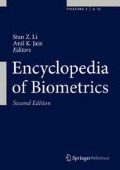Access this chapter
Tax calculation will be finalised at checkout
Purchases are for personal use only
References
L.K. Hansen, P. Salamon, Neural network ensembles. IEEE Trans. Pattern Anal. Mach. Intell. 12(10), 993–1001 (1990)
R.E. Schapire, The strength of weak learnability. Mach. Learn. 5(2), 197–227 (1990)
A. Krogh, J. Vedelsby, Neural network ensembles, cross validation, and active learning, in Advances in Neural Information Processing Systems, ed. by G. Tesauro, D.S. Touretzky, T.K. Leen, vol. 7 (MIT, Cambridge, 1995), pp. 231–238
L.I. Kuncheva, C.J. Whitaker, Measures of diversity in classifier ensembles and their relationship with the ensemble accuracy. Mach. Learn. 51(2), 181–207 (2003)
Y. Freund, R.E. Schapire, A decision-theoretic generalization of on-line learning and an application to boosting. J. Comput. Syst. Sci. 55(1), 119–139 (1997)
L. Breiman, Bagging predictors. Mach. Learn. 24(2), 123–140 (1996)
D.H. Wolpert, Stacked generalization. Neural Networks 5(2), 241–260 (1992)
L. Breiman, Random forests. Mach. Learn. 45(1), 5–32 (2001)
E. Bauer, R. Kohavi, An empirical comparison of voting classification algorithms: bagging, boosting, and variants. Mach. Learn. 36(1–2), 105–139 (1999)
K.M. Ting, I.H. Witten, Issues in stacked generalization. J. Artif. Intell. Res. 10, 271–289 (1999)
D. Opitz, R. Maclin, Popular ensemble methods: an empirical study. J. Artif. Intell. Res. 11, 169–198 (1999)
Z.H. Zhou, J. Wu, W. Tang, Ensembling neural networks: many could be better than all. Artif. Intell. 137(1–2), 239–263 (2002)
A. Strehl, J. Ghosh, Cluster ensembles – a knowledge reuse framework for combining multiple partitionings. J. Mach. Learn. Res. 3, 583–617 (2002)
T.G. Dietterich, Machine learning research: four current directions. AI Mag. 18(4), 97–136 (1997)
Z.H. Zhou, Y. Jiang, S.F. Chen, Extracting symbolic rules from trained neural network ensembles. AI Commun. 16(1), 3–15 (2003)
Author information
Authors and Affiliations
Editor information
Editors and Affiliations
Rights and permissions
Copyright information
© 2015 Springer Science+Business Media New York
About this entry
Cite this entry
Zhou, ZH. (2015). Ensemble Learning. In: Li, S.Z., Jain, A.K. (eds) Encyclopedia of Biometrics. Springer, Boston, MA. https://doi.org/10.1007/978-1-4899-7488-4_293
Download citation
DOI: https://doi.org/10.1007/978-1-4899-7488-4_293
Published:
Publisher Name: Springer, Boston, MA
Print ISBN: 978-1-4899-7487-7
Online ISBN: 978-1-4899-7488-4
eBook Packages: Computer ScienceReference Module Computer Science and Engineering

